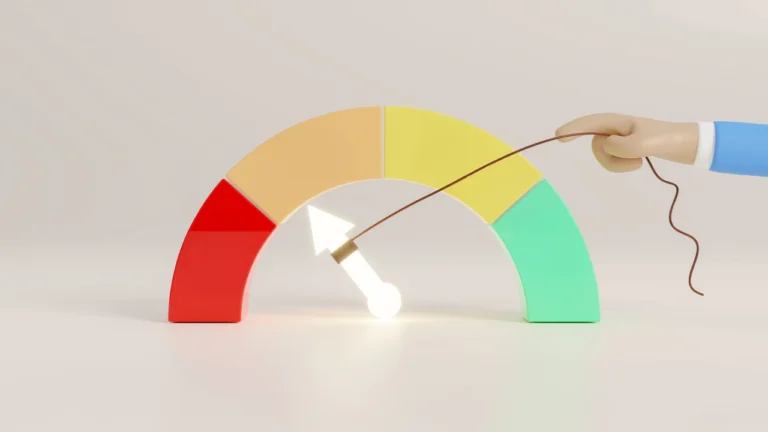
For 13 years, Subway Surfers’ download rate has been consistent: about one million new installs every single day.
Half of those downloads come from users upgrading to new devices. The other half comes from children aging into phone usage, and users in less developed countries reaching a level of affluence that allows them to purchase their first smartphones. This steady influx of players has made Subway Surfers the most downloaded mobile game of all time, with 4.5 billion lifetime downloads.
Recently, however, Subway Surfers’ traffic has arrived in more dramatic waves. In 2020, the app saw a surge of new users after TikTokers discovered a way to “hack” the game. In 2022, a 10th anniversary social media campaign—combined with a TikTok-viral “no coin” challenge—once again sent downloads soaring.
Mathias Gredal Nørvig, CEO of Subway Surfers’ parent company SYBO, understands the vital role social media plays in the game’s continued growth. Many of its early competitors have vanished: Draw Something and Zombie Farm are no longer on the app store, and Temple Run (which once inspired Subway Surfers) has stagnated. Through TikTok, though, Subway Surfers has kept its edge.
“The fact that TikTok loves us means we’re also being rewarded by Apple and Google, because their algorithms see what trends on other platforms,” Nørvig says. “It’s a flywheel of activation.”
Subway Surfers’ social media dominance
TikTok is crowded with so-called “brain rot” content. These posts typically layer two unrelated videos: one showing a TV show or narrated Reddit post, the other featuring a video game. Also called “sludge content,” the videos lull the doomscrolling brain into a passive state, watching and listening as the parallel feeds play. It’s like “Cocomelon” for teenagers.
Nørvig takes a much sunnier view of these videos, saying they “give you a moment of zen.” They also frequently feature Subway Surfers, repeatedly bringing TikTok users back to SYBO’s IP. There’s no clear evidence that these “brain rot” videos drive viewers to the App Store, but they certainly do keep Subway Surfers in the conversation.
“[TikTokers] know we’re not going to go after them for posting our content,” Nørvig says. “We have a very different approach from other companies, where they do a lot more policing of social media.”
Subway Surfers’ in-house social media channels are led by Celia Zimmermann, SYBO’s head of player experience. While the company produces plenty of its own content across platforms, the team also spends considerable time supporting the flow of organically created content. Zimmermann describes the game’s openness as “brave,” noting that many community managers at other gaming companies don’t have the same speed for green-lighting. “We have IP that we’re able to be quite flexible with,” she says.
This social momentum is especially important for Subway Surfers’ young audience. Many tween players gather on platforms like TikTok. SYBO does not track younger players directly, but Nørvig estimates anecdotally that about half of the game’s players are under 18. That figure does not account for the many kids playing on adult devices, which could push the percentage even higher.
Of course, not all social media trends are positive. In New York City, a TikTok challenge recently encouraged some young people to try hopping between subway cars. At least six people died in 2024 attempting the stunt. Nørvig calls the trend “unfortunate” and says SYBO would never repost or amplify dangerous content, though the company ultimately decided not to issue a public statement.
“Train surfing has been a thing that people are doing in New York, thankfully very seldom, but we haven’t seen with our downloads that people think of it as something they can do in real life,” Nørvig says. “It’s clearly a game, and a silly game at that, and therefore we don’t have any direct connection to it.”
Can TikTok keep a 13-year-old game on top?
Nørvig sees Subway Surfers as part of a standout group of Scandinavian mobile games. There’s Angry Birds, launched in 2009, and Candy Crush, which debuted in 2012. Both remain strong performers, though Subway Surfers’ download rate now outpaces them by a sizable margin, according to analysts. It also stands out as the only game in the group embracing such a deeply TikTok-driven strategy—though it remains hard to say whether virality and revenue always go hand in hand.
While SYBO declined to share exact revenue figures, Nørvig notes that 80 to 85% of the company’s revenue comes from advertising, with the rest generated through in-app purchases. Monthly active users remain relatively steady—aside from viral spikes—at 100 to 150 million. With such a stable user base, revenue shifts at SYBO tend to follow fluctuations in the ad market.
Analysts are split on Subway Surfers’ future. Samuel Aune, a gaming insights analyst at Sensor Tower, supports Nørvig’s view of long-term stability. He describes the game’s 10-year download curve as “really consistent,” especially when compared to its peers. “Not a lot of games have lived 10-plus years,” he tells Fast Company.
Ariel Michaeli, CEO of Appfigures, takes a more skeptical stance. Mobile game downloads have declined across the board on both the App Store and Google Play. “But Subway Surfers has dropped a little bit more than everyone else,” he says, citing the company’s internal tracking. “It used to be number one for a very long time. Over the last few months, it started slowly going down [the ranking] . . . Subway Surfers has been around for so long that there’s fatigue.”
And what if TikTok disappeared? That seems unlikely in the U.S. for now, with President Donald Trump having extended the TikTok ban deadline for a third time. But in India, where TikTok is banned, Subway Surfers had to pivot. “Facebook is their go-to, and so is YouTube, so that’s the place where we go to engage with them,” Zimmermann says.
For now, Subway Surfers holds its lead. Nørvig argues that among today’s top-ranked mobile games, it is the only one growing organically. Its steady stream of downloads continues, driven by strong, recognizable IP and smart social media strategy—not by less transparent forces.
“We’re still the most downloaded viral game,” Nørvig says. “Everyone else has paid for their traffic to get on that list.”


